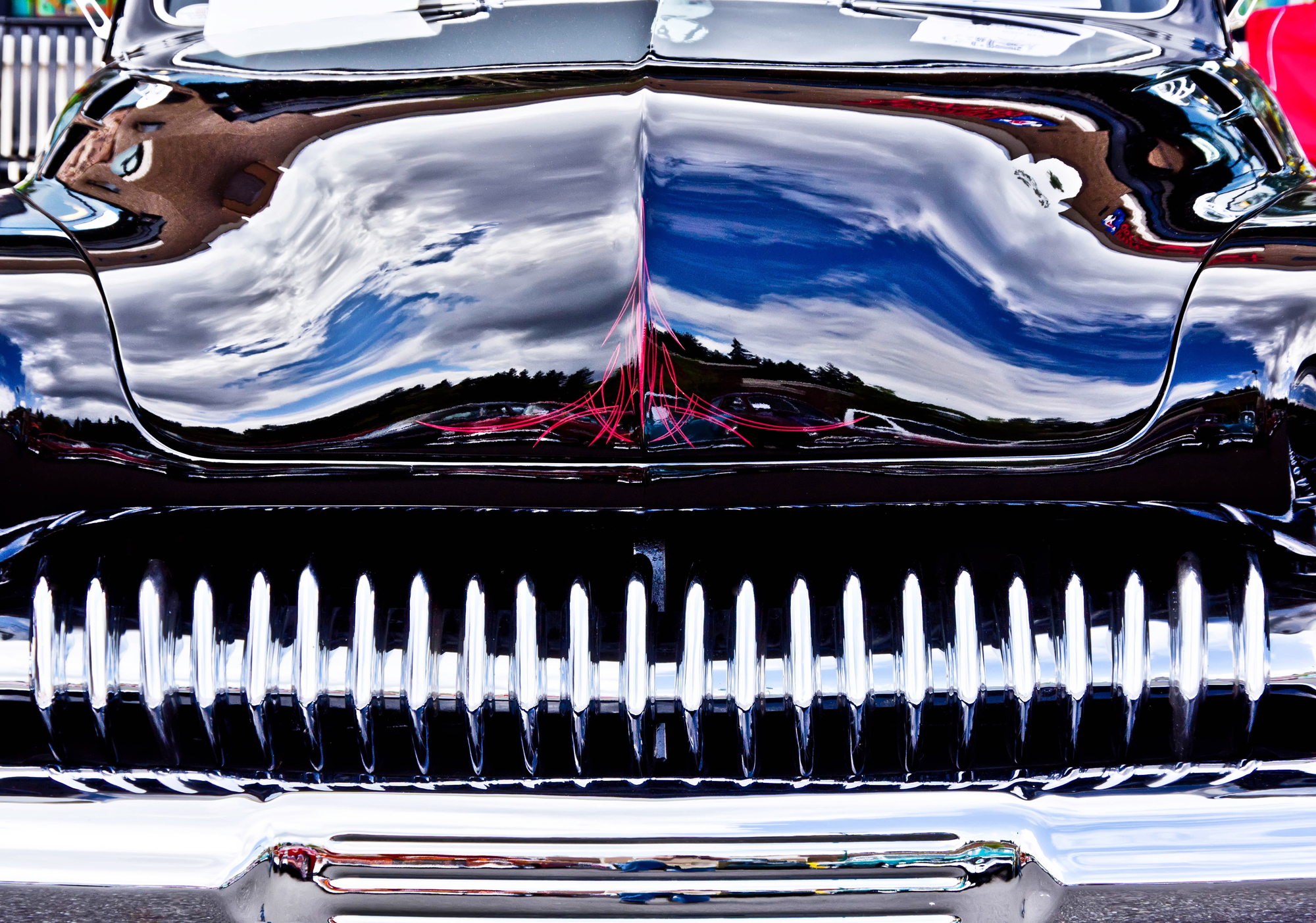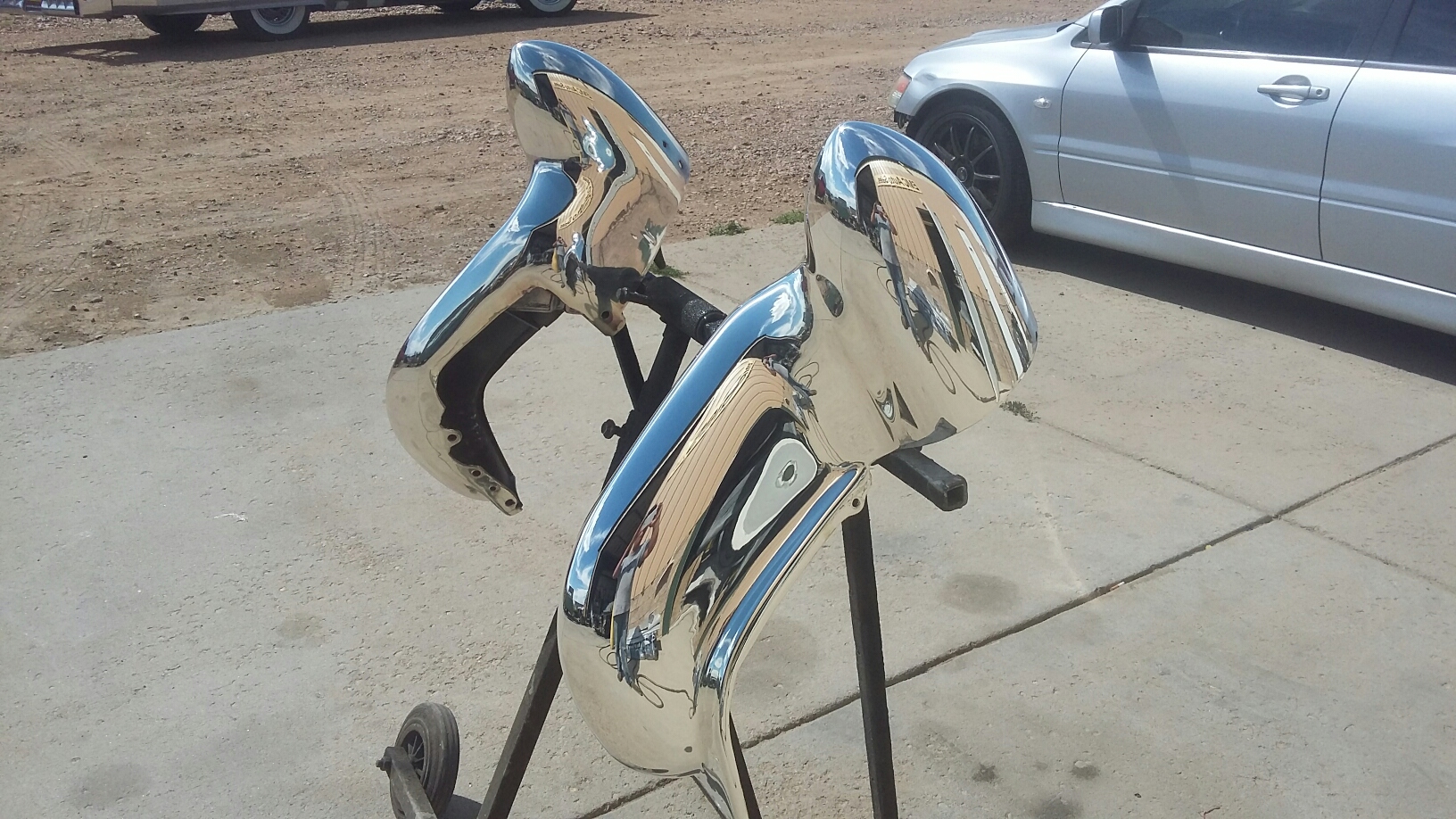What Is Chrome?
Chrome, which is the colloquial term for chromium, is a naturally occurring element. A metal, it is useful for plating rather than as a solid substance. A thin layer of it is applied over a different surface material such as steel, brass, aluminum, plastic, copper or stainless steel.
Some people refer to all shiny finishes as chrome when they do not actually contain chromium. These other surfaces might include highly polished aluminum, vacuum-metalized mylar, painted wheels and nickel-plated objects. Chrome plating is brighter, bluer and has a deeper reflection than other finishes do.
Here is a guide to chrome plating that will help you to better understand the process as well as alternatives to it.

Guide to chrome plating
You might have heard various terms, such as chrome plating, chrome electroplating, chrome dipping and chroming. These terms generally refer to chrome plating, which is chrome electroplating.
Is all chrome plating the same?
There are two basic methods for chrome plating, including engineered chrome plating and decorative chrome plating.
1. Hard Chrome or engineered chrome plating
Most people likely do not understand the hard chrome or engineered chrome plating process. Hard chrome plating is applied as a heavy coating for greater lubricity, oil retention, wear resistance and other durability purposes. it is used on such things as piston rings, thread guides, mold surfaces and hydraulic cylinder rods. It is only referred to as hard because it has enough thickness to measure. Decorative chrome plating is just a millionth of an inch thick, so it will break if a hardness test is conducted on it.
Hard chrome plating is generally applied to steel surfaces. It is shiny and metallic, but it is not meant to be decorative. It is a good choice for bumpers or wheels. Engineered chrome plating has its own variations, including some that are optimized for porosity in order to retain oil and others that are thinner.
Businesses that perform engineered chrome plating normally don’t do any other types of plating. Most customers will not be interested in the services offered by a business that says it offers hard chrome only.
2. Decorative chrome plating
Decorative chrome plating is also referred to as nickel-chrome plating. It involves first electroplating nickel on the part before plating it with chrome. Sometimes, copper is electroplated instead of nickel. The nickel or copper level provides smoothness, corrosion resistance and reflectivity. The chrome layer that is added is very thin and is measured in millionths of an inch.
The effects that you see when you look at a nickel-chrome plated surface, you are primarily seeing the nickel plating. The thin chrome layer adds a slightly bluish hue, protects it against tarnishing and scratching and helps to add to the corrosion resistance.
Why the quality of chroming is critical
The quality of chrome dipping or plating is crucial. If you use a low-quality chrome plating, the porosity or pinholes in the finished piece are worse than if no plating was used at all. This is because the underlying steel will rust. Poor-quality chrome plating that shows tiny rust spots when you purchase it is a defect, and you should return it.
Common terms: Show chrome, triple-chrome plating and double nickel-chrome
When you hear the term ‘show chrome’, it means that the chrome is high-quality enough to be used on a car that is entered in a car show. Lovers of chrome believe that copper-plating the item first and buffing it to a full sheen before nickel-plating is the key.
High-quality plating jobs normally require your part to have two layers of nickel before the chrome is applied.
Salespeople may throw around terms like triple-chrome plating to mean that there are 3 layers of any type of plating. This simply is their effort to convince you to make a purchase and means very little.
Durable chrome plating meant for outdoor exposure should have a minimum of two layers of nickel plating before the chrome plating is applied. it should include a layer of semi-bright nickel that is followed by a layer of bright nickel because the bright nickel is anodic to semi-bright nickel, making it resist corrosion better. Chrysler developed a test that is used by large shops each day to make certain that the chrome plating has the correct protections. Restoration shops that only offer single-layer nickel plating must apply it in a very heavy layer in order to guarantee corrosion resistance.
Restoration work
Chrome plating involves a long and complex process, beginning with buffing, polishing, cleaning, dipping in acid, adding zinc and copper plating. For show chrome, the process is finished by re-buffing, cleaning and re-dipping, plating added copper, two to three types of nickel plating and finally, the chrome plating. The item is rinsed between each step.
Re-chroming a part involves stripping away the old chrome, nickel and copper. Then, the part is polished to remove all of the blemishes and scratches before plating it with copper, buffing to force the copper into tiny pits and then doing the previously described steps.
This means when you re-plate an old piece, it can cost several times the amount a replacement part would cost. New items don’t require as much preparation, and machines handle dozens of identical parts simultaneously. Old parts must instead be processed one at a time.
When chrome blisters or peels
Chrome plating that blisters or peels is almost always a defect of the manufacturing process caused by poor adhesion of the chrome plating to the surface. Chrome-plating shops have a difficult time getting good adhesion on certain surface materials such as alloy wheels.
If your chrome peels, then you should file a complaint. Don’t let the shop try to tell you it is due to chemicals that you have or how often you wash your wheels.
Do it yourself?
Chrome plating requires professional work in a shop. There are regulations that control chrome plating because of the toxic acid baths that are used. The electroplating industry was the country’s first one that was categorically related. This means that all of the waste from the process is regulated.
Trying to comply with the myriad regulations during a do-it-yourself project can put you in violation of the Environmental Protection Agency’s rules. It is best to not attempt it. You will have trouble finding places to dispose of the waste, including any dilute water that is used. You are also responsible for the waste even if you are able to find a facility if it later poisons the ground or the water.
Chromic acid
Chrome plating uses very high concentrations of chromic acid. This is the same toxic chemical that made Erin Brockovich famous. If you were to use it and then someone nearby developed cancer, you could be sued. Shops that use it must undergo exhaust scrubbing and are subject to daily monitoring. The workers have to frequently undergo blood testing to check for absorbed chromium.
Chromic acid leaches into the ground very easily and into the aquifer. It is visible at a concentration of 1 part per million, and all of the water supplies and wells are monitored for it. This means that if you illegally dispose of it, you are likely to be caught.
Hydrogen embrittlement of steel
Most municipalities have bans in place on chrome plating. It is also known for hydrogen embrittlement, which can turn hardened steel parts into brittle, glass-like substances.
On top of all this, many city councils have a written or de facto ban on chrome plating.
Again, just don’t do chrome plating on your own. The risks are simply not worth it. Plus, you have an excellent alternative with PChrome spray chrome, which can give you the same durability and look as chrome plating but without all of the associated dangers, expense and time.
Spray chrome
Spray chrome is an excellent alternative to traditional chrome plating. You can apply it on-site, and it doesn’t require the toxic acids used in traditional plating. You use a specific number of steps and sprays. PChrome spray-on chrome requires you to mix your solutions and follow the step-by-step process, but it leaves you with a strong, durable surface that has the mirror-like finish for which chrome is known. You can also apply translucent layers to add a variety of different hues for a customized appearance.
Chrome spray can be used on parts of any size if you are willing to do the work. You are also not as limited in your chosen substrate, and it can be used on wood, glass, metal or even canvas. Its versatility is unmatched by chrome plating. It is also much better for the environment, ridding you of the concerns about your environmental impact.
The advantages of PChrome spray over traditional plating are numerous. It is much more affordable, costing about 20 percent of what you would pay for plating. You also have a greatly reduced turn-around time since you don’t have to send your part off to be chromed. You get the same shine and durability, and the resulting layer is thicker and just as resistant to weather and corrosion. It can be used for almost any purpose.
Color Chrome
There is no color chrome other than black. Colored coatings are translucent hues that are applied over a layer of aluminum flakes. This should be called chrome-look paint. Black chrome plating uses a contaminant to turn the metal either completely black or a smoky dark gray. It is sometimes used for solar collectors, as a matte finish or as a decorative touch for car parts.



